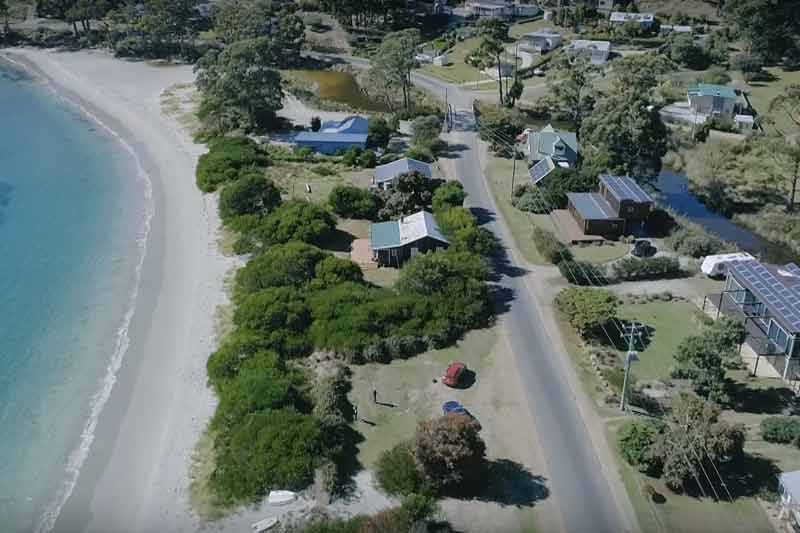
Last week, the Australian National University (ANU) announced
in a press release that new smart electricity technology developed at the University
has been successfully trialled in Tasmania.
The Network Aware Coordination (NAC) technology was used to manage
the supply of renewable energy and battery storage from 40 homes on Tasmania's
Bruny Island to the grid. The technology allowed household solar systems and
household battery storage to work seamlessly with the electricity networks to
help manage electricity supplies at times of peak demand.
Bruny Island is connected to the mainland through an undersea
power supply cable. During holidays, it is difficult for the cable to cope with the increased power demand. With a modest investment, the researchers provided a solution
to the problem while demonstrating a technology which could be used to coordinate
thousands of batteries in the future.
Renewable sources of energy, such as wind and solar, are
intermittent. Batteries are used to bridge the gaps in generation and to store
the energy when production exceeds consumption and return energy to the grid
when production falls below consumption, as supply must balance demand in electricity
grids.
The NAC technology makes it easier to coordinate when
renewable energy should be injected into the grid and when it should remain
stored in household batteries.
It could help networks improve operations at normal times,
reduce stress during times of peak demand, and remove the need for costly
network upgrades over the long term.
The NAC ensures household energy data is kept private while
helping negotiate the best price for the power when it is fed into the
electricity grid.
Dr Dan Gordon, from the ANU Research School of Engineering, explained,
“One of the great things about NAC is that it is a distributed algorithm. Each
customer's system acts in their own best interest, and privacy is retained –
yet we arrive at a solution which is better for everyone.”
Dr Gordon added that each customer's system performs
relatively easy calculations, and the calculations do not get harder as more
customers are added. The vision is that NAC could be scaled up to a large
ecosystem of residential and distributed energy providers.
The system
could be used across Australia to both improve electricity security and to
drive down energy prices. Lead developer of the NAC, Dr Paul Scott from
the ANU Research School of Computer Science, noted that successfully getting solar power and
energy storage into homes would make the electricity grid more efficient, strengthen
its reliability and also help bring energy prices down for consumers.
Project leader Professor Sylvie Thiébaux from the ANU
College of Engineering and Computer Science said the new NAC technology would
lead the way in distributed optimisation of clean energy and would help enable
mass deployment of renewable energy.
“Through the Bruny Island trial we have demonstrated how the
NAC approach can solve wider grid problems, in particular those that can arise
through the mass deployment of renewables and battery storage. This paves the
way for a more intelligent way to operate our grids reliably, while
collaborating with consumers to make the best use of the resources they are
installing,” Professor Thiébaux said.
CONSORT Project
The NAC tests on Bruny Island were done in collaboration
with the A$8 million CONSORT
project (CONSumer energy systems
providing cost-effective grid support), a collaboration
between ANU, The University of
Sydney, The University of
Tasmania, electricity network TasNetworks, and Canberra-based
Reposit Power.
In a video, Dr Lachlan Blackhall from the Battery Storage and Grid
Integration Program at ANU said that the goals of the CONSORT Project were to
understand how customer-owned solar and battery systems could be used to effectively
work together problems faced in the electricity system.
According to Dr Hedda Ransan-Cooper from the College of Engineering
& Computer Science at ANU, the CONSORT Project is trying to bring about
socio-technical change. It requires expertise and input from different disciplines
and hence, the project brings together economists and social scientists with computer
scientists.
The CONSORT project was recently named the 2018 Australian
Energy Project of the Year by the Electrical Energy Society of Australia.
The Australian Government, through the Australian Renewable
Energy Agency (ARENA), is providing
A$2.9 million towards the CONSORT project under its Research and Development
Programme.
















